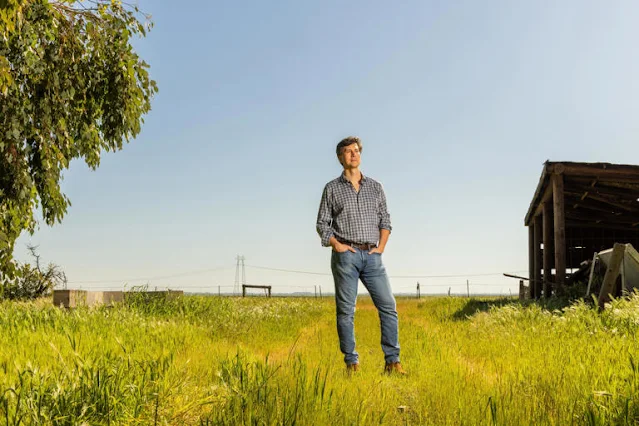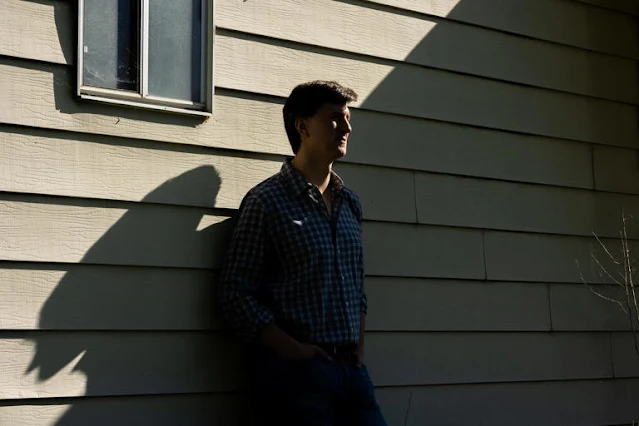Certainly! Here's a rephrased version of the content:
On one side of the gravel road, stretches of grass extend toward distant wind turbines, while scattered eucalyptus trees dot the otherwise empty fields on the other side. This vast expanse lies an hour north of San Francisco, far from the nearest subdivisions, schools, and strip malls, embodying a uniquely Californian emptiness. However, in the eyes of Jan Sramek, a former Goldman Sachs trader, this landscape is teeming with potential. While others see only blue sky and dusty farmland, Sramek envisions row houses, apartments, art galleries, sushi bars, bike paths, and parks. He sees a vibrant, energy-efficient community blending 19th-century village charm with 21st-century amenities like fiber-optic internet and self-driving cars. He sees the city of the future, California Forever.
"Downtown would be here, where the highways cross," he points to his right, gesturing toward an invisible city. At just 37 years old, dark-haired and tall, standing next to his gray Tesla Model Y, arms outstretched, Sramek's vision materializes before him. "And we're putting a second downtown closer to Rio Vista," he adds, gesturing toward the distant town.
Sramek acknowledges that his vision may seem a little crazy, but he believes it's less crazy than when he conceived it in 2017. He acknowledges the doubts, which are widespread. The revelation that a mysterious investor had become the largest landowner in Solano County caused an uproar among locals. Things escalated when Sramek, backed by Silicon Valley billionaire investors like LinkedIn cofounder Reid Hoffman, philanthropist Laurene Powell Jobs, and venture capitalist Marc Andreessen, was revealed as the force behind California Forever. Opponents accused Sramek and his cohorts of using strong-arm tactics to bully locals out of their land, leading to public outcry and a ballot resolution to rezone the property for his vision.
Sramek's journey to California Forever began in the early 2000s in England. Born in the Czech Republic, he moved to York, England, at 17 to attend boarding school and later excelled in his A-level exams. This success led him to the University of Cambridge and eventually to London's financial district, where he landed an internship with Goldman Sachs. By 2009, he became a trader at Goldman Sachs, but after a short tenure, he moved to Zurich to launch a hedge fund, which later pivoted to an education startup. Unsatisfied with his ventures in Europe, Sramek moved to California in 2015, where he observed the housing crisis in the Bay Area firsthand.
Recognizing the need for change in America's cities, Sramek immersed himself in urban development literature, reading over 500 books in two years. Inspired by Jane Jacobs' "The Death and Life of Great American Cities," he traveled the world studying successful neighborhoods. Armed with this knowledge, he decided to shift his focus from software startups to real estate, with a vision to create sustainable, affordable, and vibrant communities.
His attention turned to Solano County, specifically an empty space between Travis Air Force Base and Rio Vista. Recognizing its strategic location between San Francisco and Sacramento, Sramek saw the potential to build a new city that could alleviate the housing crisis and create a model for sustainable urban living. He named his company after Flannery Road, which runs across the site, and assembled a team of urban planners to assist him.
However, Sramek's plans faced opposition from local residents, who were wary of the project's scale and impact. Concerns were raised about the secretive nature of the land acquisitions and the potential for the project to displace local communities. Despite his efforts to engage with the community and address their concerns, Sramek faced criticism and skepticism.
As he continues to navigate the complexities of zoning laws and community opposition, Sramek remains committed to his vision for California Forever. While some view his project as a glorified subdivision, Sramek sees it as a solution to the housing crisis and a step towards creating more sustainable, inclusive communities. Whether he can overcome the challenges ahead and turn his vision into reality remains to be seen.


